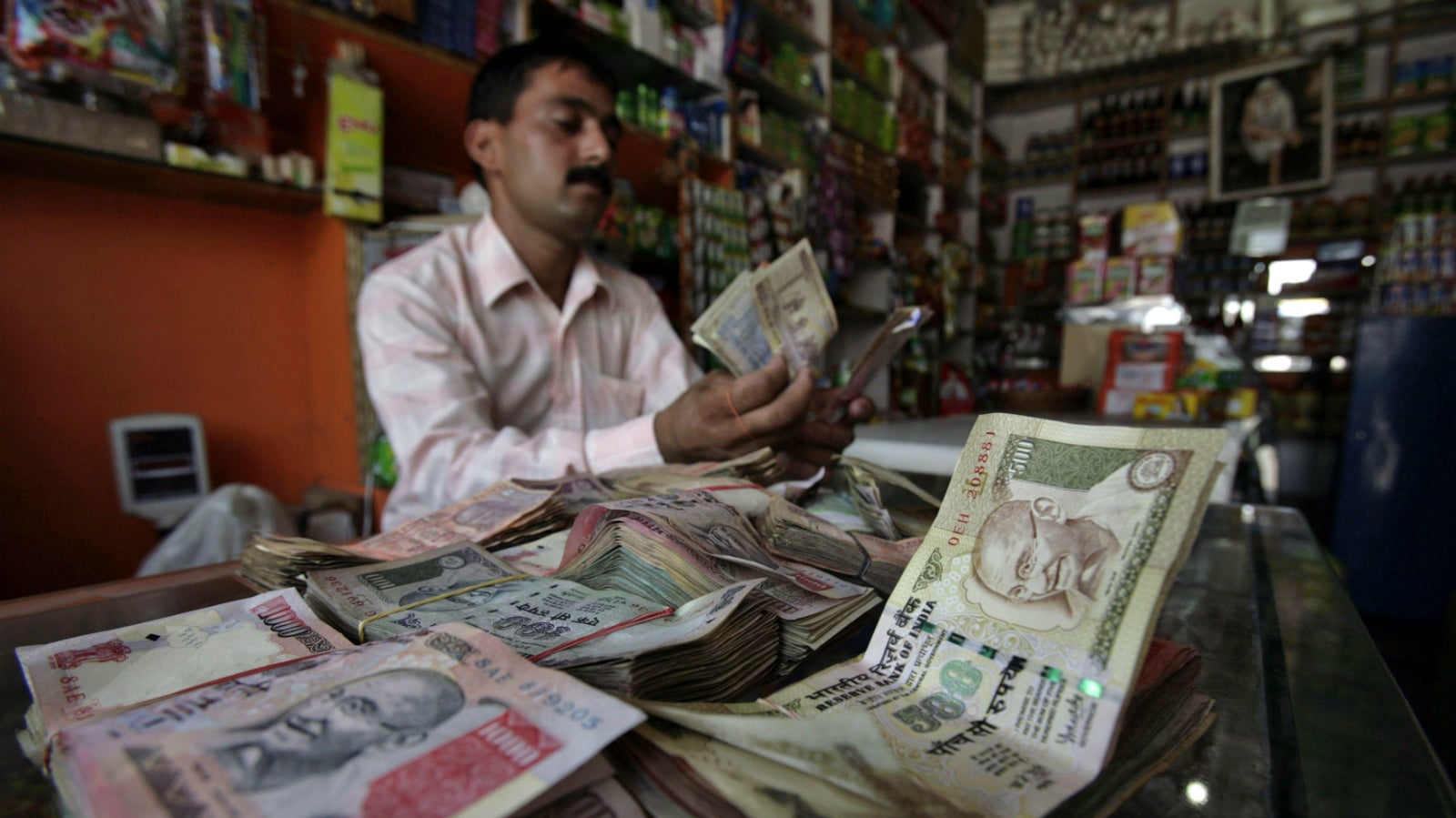Those rupee notes in your hand are dirty—and deadly
That money is dirtier than you think.


That money is dirtier than you think.
Paper currency in India carries a whole bunch of genetic material from micro-organisms—bacteria, fungi and viruses.
Scientists at the Institute of Genomics and Integrative Biology (IGIB) in Delhi recently studied the microscopic environment of Rs10, Rs20 and Rs100 currency notes that they collected from street vendors, grocery stores, snack bars, hardware shops, chemists and such places where one would expect to find money that has frequently changed hands. In their study, published in the international journal PLOS One, they found the microscopic environment—or microbiome—of currency notes to be rife with the DNA of pathogens.
Dirty money
“Our analysis revealed the genetic material on the Indian currency notes roughly has Eukaryotic species such as fungi (70%), bacterial populations (9%) and viruses (<1%),” S Ramachandran, principal scientist and one of the study’s authors, said in an email. “We identified 78 pathogens including Staphylococcus aureus and Enterococcus faecalis.” Staphylococcus aureus can cause skin boils, sinusitis and food poisoning. And Enterococcus faecalis are sometimes found in teeth after root-canal treatments and can cause life-threatening infections.
Parsing through the DNA sequences of the 78 disease-causing microbes, the team found 78 antibiotic-resistant genes. Eighteen of these genes are so common that they were found in all the currency samples that the team analysed. Some of these genes confer resistance to penicillin and erythromycin. Organisms carrying these genes might, for example, be resistant to medicines used to combat all sorts of bacterial infections.
Antibiotic resistance is emerging as one of the biggest health threats in India and around the world. This kind of resistance by bacteria and viruses is causing new health problems like infections from the NDM-1 superbug as well as setbacks in treating existing diseases like tuberculosis, which keeps reemerging in new forms that don’t respond to available drugs.
Keeping it clean
An important point to note is that the IGIB team found DNA from these pathogens on the currency notes, which may or may not be from live organisms on the notes. As the study says, “The mere presence of the genetic material from the pathogen would not necessarily mean the sample is infective, though the presence of genetic material would necessarily mean the sample was contaminated at some point in time.”
The role of the currency note here is one of a fomite—an object that is capable of transferring an infectious agent from one individual to another. Skin, hair, clothing and bedding are some common fomites. Mobile phones have also been found to be new-age fomites. You cannot become ill just by holding a currency note that is carrying a pathogen, but there is a strong case for cleaning your hands between the everyday tasks of handling money and eating.
In addition to DNA from infectious agents, the researchers also found DNA of 13 kinds of cellulose-degrading bacteria on the notes, the kind that digest paper and might take a note out of circulation faster.
One way to reduce the risk of spreading infection through banknotes is to switch to plastic. Countries like Canada, Australia and the UK have started putting polymer banknotes into circulation. The other is to use credit and debit cards that don’t pass through so many other hands.
This post first appeared on Scroll.in.